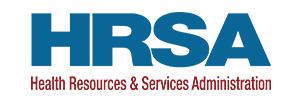September 24, 2025

New Microsoft Offers to Support Rural Health Efficiency Innovation, and Resiliency
To build on Microsoft’s philanthropic commitment to all rural health hospitals in the US, the Rural Health Resiliency program is pleased to announce that the following offers are now available:
- Windows 10 Extended Security Update (ESU) Free One-Year Extension
- The free one-year Windows 10 ESU is now available to all US rural hospitals.
- The ESU extends the use of Windows 10 devices in a secure manner, while lightening the cost burden for the transition to Windows 11.
- The ESU extension is valid through October 13, 2026, and covers up to 250 devices running the latest software update (22H2) per rural hospital.
How to Access Windows 10 ESU and Frequently Asked Questions (FAQ)
-
- To be qualified for this offer, confirm your hospital is listed as “rural” in the Urban and Rural Hospitals database.
-
-
- All independent Critical Access Hospitals and Rural Emergency Hospitals are also qualified.
- For health system customers, only the specific hospitals listed as rural in the database qualify for this offer.
-
- If you are not yet registered for the Microsoft Rural Health Resiliency Program, register here.
- If you do not have an existing Microsoft Account, click here to create your account today. If you have an existing account, sign in as the administrator of the Office 365 account.
- Accept TechSoup as a Provider and accept the Microsoft Customer Agreement.
- Fill out this request form
- Look for an email from TechSoup within the next five business days. It will include the product keys to access your licenses. Once you receive that mail, you will have five calendar days to download the product keys. You will receive one product key per order.
Click Here to Learn More about Microsoft’s ESU program
- Pro Bono Cloud Capability Evaluations
Many rural hospitals still depend on on-premises infrastructure due to financial, technical, and connectivity challenges. This legacy IT drains budgets, slows staff, and steals time from patient care. The Cloud Capability Evaluation gives rural hospitals a clear roadmap to shift IT infrastructure to be cloud-powered, secure, and cost effective.
-
- If your hospital is already registered for the Rural Health Resiliency program send an email to: RuralHealth@microsoft.com to schedule your free evaluation.
- If your hospital has not yet registered for the program, and would like to access the Free Cloud Capability Evaluation and other offers, click here to register today.
- Free AI-powered Claims Denial Navigator Tool
To streamline insurance claim processing, the Claims Denial Navigator – the first AI innovation co-created with healthcare leaders in the Rural Health AI Innovation Lab (RHAIL) – is now available for free on GitHub: RHAIL Claims Denial Navigator.
This AI-powered tool helps recover lost revenue and streamline the process of researching and resolving denied Medicare, Medicaid, and commercial insurance claims. Built to be lightweight and flexible, this tool:
-
- Requires minimal capacity in SharePoint, Azure, and Power Apps,
- Operates entirely within your hospital or organization’s existing IT environment, and
- Is EHR-agnostic with no integration or interfacing required
The Microsoft Rural Health Resiliency (RHR) Program provides free cybersecurity, affordability, and AI tools to all rural hospitals in the U.S.








